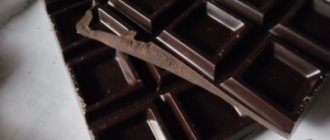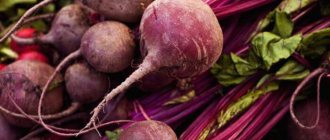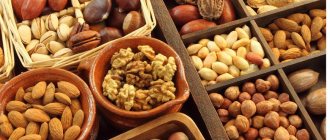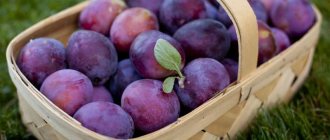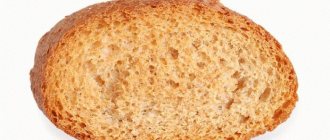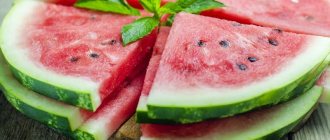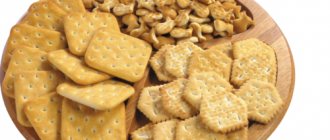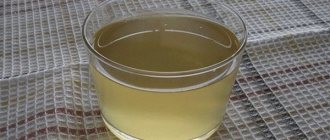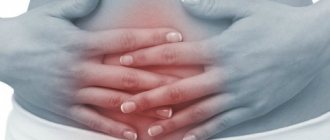Vinaigrette is one of the most popular salads in Russia, as well as in all countries of the former Soviet Union. Patients with pancreatitis are prescribed a strict diet for life. Therefore, it is logical that many patients ask the question of whether vinaigrette is possible for acute or chronic pancreatitis. After all, the salad contains boiled vegetables, which are included in the diet. But is it really possible to eat vinaigrette for pancreatitis, what are its benefits and will it cause harm?
Benefit
Vinaigrette is a very healthy salad that is a direct source of vitamins. Due to the fact that almost all of its ingredients are well stored in winter, it can be prepared at any time of the year. This will help compensate for the seasonal lack of vitamins and minerals in the human body.
Vinaigrette contains pickled vegetables. Thanks to these elements, a person’s appetite improves and the absorption of food improves. Beets bring even greater benefits to the human body. It helps to cope with chronic constipation, as it stimulates intestinal motility.
Required Products
The vinaigrette requires several ingredients: beets, carrots, cucumbers and potatoes.
To prepare a dietary vinaigrette, you will need to prepare the following ingredients:
- beets - ½ pcs.;
- potatoes - 1 pc.;
- carrots - 1 pc.;
- dill;
- vegetable oil - 2-3 tbsp. l.;
- small cucumber - 1 pc.
Harm
Like any dish, vinaigrette has some side effects. For example, pickled vegetables cause the following harm:
- irritate the mucous membrane of the digestive tract;
- stimulate pancreatic secretion;
- increase inflammation of the pancreas due to high salt content.
If a patient who has been diagnosed with pancreatitis introduces pickled vegetables into his diet too early, he risks exacerbating the disease.
Cabbage and cucumbers, which are in the vinaigrette, are rich in coarse plant fiber. This can cause increased gas formation in the body, as well as pain in the stomach and pancreas.
Vegetable dish recipe
Prepare a vinaigrette, which is allowed to be eaten by people with pancreatitis, as follows:
- Wash the beets and boil them in boiling water; it will take about 1.5-2 hours to cook. Next, the finished vegetable is poured with cold water, and the water in which it was boiled is drained.
- Wash the potatoes with their skins and immerse them in boiling and pre-salted water. It will take about half an hour to prepare.
- Cut the cucumber into 2 parts and soak in cold purified water for 25 minutes.
- Peel the boiled, cooled beets and cut into equal cubes. Place the ingredient in a container and pour a little vegetable oil over it.
- Rinse the cucumber in cold water, trim the skin and chop into cubes. Add cucumber to beets.
- Wash the dill under running water, chop finely and sprinkle it over the ingredients in the container.
- Peel and cut the boiled potatoes like the rest of the vinaigrette ingredients. Add it to the vegetables and mix everything thoroughly.
Beetroot for pancreatitis
Beets are the basis of any vinaigrette. Therefore, before introducing this salad into your diet, you need to learn about all the contraindications of beets for pancreatitis. Despite the fact that this vegetable contains a lot of useful vitamins and minerals, consuming it in acute pancreatitis is strictly prohibited.
But in case of a chronic form of the disease, doctors allow the consumption of beets in moderation, but it must be introduced into the diet gradually, carefully and in very small portions. For example, you need to start with one tablespoon per day for a week. Over time, it will be possible to increase the portion if the doctor gives the go-ahead.
Please note that you should never add vinegar, lemon juice or citric acid to the water when cooking beets in order to preserve the bright color of the vegetable. If beets are prepared for a person who has pancreatitis, then this will only harm him and lead to an exacerbation of the disease.
You can also cook beets using an oven, steamer, or slow cooker. Cooking in this way will give the vegetable a softer shape, and for a patient with pancreatitis this is very important.
Cooking features and recipes
Diet No. 5p recommends eating food as chopped, boiled or baked as possible. When making a vinaigrette, these requirements must be met: the root vegetables are well boiled. You should not cut vegetables into cubes, as the recipe for healthy people recommends. For patients with pancreatitis, it is better to grate vegetables on a fine grater for the first time.
An important requirement that must be taken into account when preparing a vinaigrette for those suffering from pancreatitis is the absence of prohibited foods in the salad:
- add a small amount of vegetable oil,
- season with mashed herbs to taste,
- mix the ingredients.
Vinaigrette for pancreatitis
In acute forms of the disease, vinaigrette is strictly contraindicated to be included in your diet. It will do more harm than good and can also cause terrible stomach pain. Therefore, it is better to abandon this salad for a while.
For pancreatitis, vinaigrette can be used only if the patient has a stable remission of the disease. Of course, it should be included in the diet only if there are no contraindications from the doctor.
Please note that this permitted salad can only be eaten in small portions. As a rule, patients are allowed to consume no more than 30-100 grams once or twice a week. You can only eat it fresh. Under no circumstances should it be consumed chilled. Be sure to chew all vegetables thoroughly.
Cooking recommendations
A popular dish - vinaigrette, prepared according to a traditional recipe, is not recommended for pancreatitis, since therapeutic nutrition for pancreatic disease excludes the consumption of cabbage and legumes, as well as pickled cucumbers, which are usually put in salad. If the disease is in stable remission, you can replace them with barrel ones. If you do not use prohibited ingredients, then you can eat vinaigrette if you have pancreatitis, because its other components are very beneficial for the body. Vegetable oil is used as a dressing, but only in minimal quantities. Nutritionists strongly recommend that patients with pancreatitis include vinaigrette in the menu, the preparation process of which does not use forbidden products, because this tasty and healthy dish is digested very quickly and does not create unnecessary stress on the pancreas and stomach.
Chemical composition and calorie content of Iceberg lettuce
The energy value, balanced chemical composition, and small amount of calories in Iceberg lettuce, which cause benefits and harm, make it a universal remedy for the treatment of many diseases.
| Calorie content (kcal) | Proteins (g) | Fat (g) | Carbons (g) |
| 14 | 0,9 | 0,14 | 1,77 |
Energy ratio of proteins, fats and carbons of Iceberg lettuce:
The composition of the salad is so diverse that it can be called a source of biologically active substances. Contains vitamins and minerals important for humans, the main ones are presented in the table.
| Vitamins | Minerals | ||||
| macronutrients | microelements | ||||
| A | 25 mcg | Calcium | 18 mg | Iron | 0.41 mg |
| IN 1 | 0.041 mg | Sodium | 10 mg | Manganese | 0.125 mg |
| AT 2 | 0.025 mg | Potassium | 141 mg | Copper | 25 mg |
| AT 5 | 0.091 mg | Magnesium | 7 mg | Selenium | 0.1 mcg |
| AT 6 | 0.042 mg | Phosphorus | 20 mg | Zinc | 0.15 mg |
| AT 9 | 29 mcg | ||||
| WITH | 2.8 mg | ||||
| E | 0.18 mg | ||||
| TO | 24.1 mcg | ||||
| RR | 0.123 mg | ||||
| Kholin | 6.7 mg | ||||
What foods are prohibited to eat if you have this disease?
If you have a disease, it is important to exclude pork and lamb from your diet. After all, the meat of these animals is characterized by high fat content. Dairy products are also prohibited. Following a diet during the treatment of pancreatitis does not involve eating all kinds of nuts and legumes, in particular peas and beans. It is recommended to avoid egg yolks and pickles. It is unacceptable to consume mayonnaise, as well as snacks (chips, crackers, peanuts) containing food additives and an abundance of spices.
Based on the list of permitted and prohibited foods, a sick person can independently modify salad recipes for pancreatitis. This solution allows you to stick to a diet without causing harm to your health, and at the same time significantly diversify your daily diet.
Why is mayonnaise harmful?
There are several reasons why this familiar sauce is classified as potentially dangerous:
- High fat content (up to 70%), which makes it difficult and long to digest.
- The presence of acetic and citric acids, which irritate inflamed areas of the pancreas.
- High percentage of hot spices, mustard, garlic.
- The presence of preservatives, thickeners, dyes, flavor enhancers, acidity regulators, flavorings and other compounds of chemical and synthetic origin, the use of which is undesirable for pancreatitis.
Diet Olivier
Dietary version of the Olivier salad. This salad is a welcome guest on the holiday table. It can also become accessible and useful for patients who have pancreatitis. To do this, boil eggs (hard-boiled), potatoes and carrots in known proportions and quantities.
The last two ingredients are boiled in their skins for 120 minutes; there should be an equal number of them. Chicken breast (fillet) is cooked separately. When ready, the components are cooled and cut into small cubes, preferably of the same size. Chopped fresh cucumber is also added there. In a beautiful salad bowl, the products are mixed with low-fat sour cream and a pinch of salt.
Fruit and vegetable salads
Vegetables and fruits in one dish are a welcome variety for the patient. For example, combining carrots and only sweet apples is harmonious and healthy. The apples are peeled and used fresh after being grated, and the carrots are boiled. The vitamin miracle is topped with low-fat yogurt with the addition of one spoon of sugar (preferably brown).
Another recipe is a mixture of equal proportions of steamed pumpkin and fresh peach and banana. The prepared products are peeled, cut into cubes and filled with low-fat (up to 10%) cream (yogurt). This mix is a complete afternoon snack (breakfast).
Another possible option for mixing dietary products is mixing two sweet apples, low-fat yogurt (100 g), steamed pumpkin (0.25 kg), sweet melon (0.25 kg). Sugar is added according to preference. The components are cut into small cubes and mixed.
All introduced products and their mixtures in salads should be agreed upon with the attending physician.
Salad with boiled beets and carrots
This is a quick and easy to make vegetable salad made from year-round vegetables. After boiling, they have zero acidity, but remember that beets contain a lot of fiber, so you need to eat them in small quantities. The washed ingredients are boiled (about 2 hours) uncleaned, then they are freed from the skin, cooled and grated on a medium grater.
They are mixed, lightly salted and seasoned with low-fat sauce (vegetable oil, preferably olive oil). Sometimes it is allowed to add a grated apple to them. Optimal quantity of products: carrots from 2 to 3 pcs., beets 1 - 2 pcs., oil - according to the consistency of the salad.
Features of dishes for diet No. 5
Diet 5 helps restore the functioning of the liver and bile ducts, and also improves the secretion of bile. The daily calorie intake is 2000-2500 kcal. The diet is characterized by a normal amount of proteins, carbohydrates and some restriction of fats. You need to eat 5-6 times a day, drink at least 2 liters of liquid. Servings of dishes should be small and equal in size. Energy value of the diet:
- 80–90 g protein (30% vegetable);
- 300–400 g of carbohydrates (80 g of sugar);
- 70–80 g fat (30% vegetable origin).
Features of dishes at table No. 5:
- food should not be too cold or hot;
- permissible food temperature is 20-60 degrees Celsius;
- It is better to cook by steaming, boiling, baking, and occasionally stewing;
- Avoid eating fried foods and rough foods;
- products with coarse fiber and stringy foods should be crushed using a blender, meat grinder and rubbed through a grater;
- It is recommended to cook soups in the second or third broth, without meat;
- sweet dishes are prepared with the addition of apples, bananas, dried fruits, pomegranates, and sweet berries;
- for cooking, you can use low-fat varieties of meat and fish;
- It is recommended to include a white omelet and one yolk in the daily menu;
- It is prohibited to use fatty dairy products;
- sweets, sour vegetables, fruits and berries are prohibited;
- You cannot prepare dishes that include millet, corn, barley and pearl barley, and legumes.
- Do not use hard-boiled eggs;
- It is recommended to include vegetable salads and vinaigrette in the diet;
- you can cook non-viscous porridges (buckwheat, rice, oatmeal);
- permissible amount of salt – up to 10 g per day;
- It is better to salt dishes before serving.
General characteristics of dietary vinaigrette
Vinaigrette will be a healthy and low-calorie dish that saturates the body with essential substances. The dish includes vitamins A, B, PP, C, E, H, as well as iron, zinc, phosphorus, copper, calcium, sodium, aluminum, potassium, manganese, boron, etc. Vinaigrette contains a large amount of plant fiber and dietary fiber.
The benefits of a dish are determined by its composition:
- potatoes (increases the body's protective functions);
- beets (normalizes the functioning of the gastrointestinal tract, lowers blood pressure);
- carrots (a valuable source of vitamins A, saturates the body with iodine and calcium);
- cucumbers (improves metabolism, has a positive effect on gastric flora).
Vinaigrette improves metabolism, strengthens the immune system, prevents the development of vitamin deficiency and reduces the amount of cholesterol in the blood. This is a nutritious dish that makes you feel full for a long time.
There are many different vinaigrette recipes. Apples, tomatoes, sauerkraut or seaweed are used as additional ingredients. You can season with vegetable oil or low-fat sour cream, kefir, or yogurt. The calorie content of a dish depends on the ingredients. Energy value of dietary vinaigrette with a standard set of products (per 100 g):
- proteins – 1.5 g;
- fats – 4.6 g;
- carbohydrates – 13 g;
- calorie content – 74.2 kcal.
Comments
Thanks, very interesting. But one question plagues me with all the recipes. It says to prepare the dish and consume it immediately after preparation. And use 100g at a time. Throw out the rest? Cook it again a second time a week, consume 100g and throw it away? Who will explain it to me?
To be able to leave comments, please register or log in to the site.
Vegetable vinaigrette for pancreatitis is recommended to be used with caution. Salad traditionally contains ingredients that are harmful to a sick person, so you need to prepare dietary options, the recipe of which corresponds to table No. 5p. They do not contain components that can provoke the pancreas to produce excess pancreatic juice.
